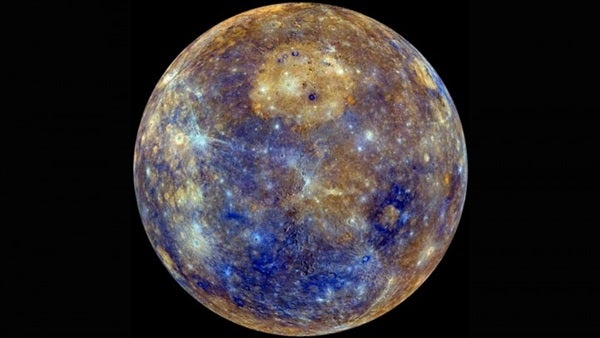The innermost planet at one point possessed intense volcanism, but according to a new study, it ended roughly 3.5 billion years ago.
Researchers from North Carolina State University (NC State) determined when the majority of Mercury’s crust-forming volcanism ended by using images taken of the surface by NASA’s Messenger spacecraft. The results are published in the Geophysical Research Letters.
There exist two types of volcanic activity: explosive and effusive. Explosive volcanism is what most people think of when volcanoes erupt. It is often a very violent event with large ash quantities and debris eruptions; the eruption of Mount Saint Helens in 1980 is a prime example of explosive volcanism. Effusive volcanism is thought to be the key by which planets form their crust. This volcanism is when widespread lava flows pour out slowly onto the landscape.
Finding the ages of these effusive volcanic deposits on the surface can help researchers grasp the planet’s geological history. Effusive volcanism was still active on Venus a few hundred million years ago, a few million years ago on Mars, and is still occurring on Earth today. But until now, the duration of effusive volcanism had not been known.
As there are no physical samples that have been brought back from Mercury, the researchers used a method called crater size-frequency analysis. This involves the size and number of the craters on Mercury’s surface to then be placed into a mathematical model in which to calculate the ages of the deposits on the planet.
Effusive volcanism stopped nearly 3.5 billion years ago according to their results, which is a an abrupt difference to the three other terrestrial planets of Mars, Venus, and Earth.
“There is a huge geological difference between Mercury and Earth, Mars or Venus,” says Paul Byrne, an assistant professor and planetary geologist at NC State, in a press release. “Mercury has a much smaller mantle, where radioactive decay produces heat, than those other planets, and so it lost its heat much earlier. As a result, Mercury began to contract, and the crust essentially sealed off any conduits by which magma could reach the surface.”
“These new results validate 40-year-old predictions about global cooling and contraction shutting off volcanism,” says Byrne. “Now that we can account for observations of the volcanic and tectonic properties of Mercury, we have a consistent story for its geological formation and evolution, as well as new insight into what happens when planetary bodies cool and contract.”










